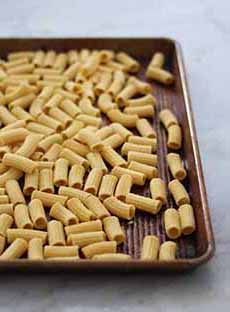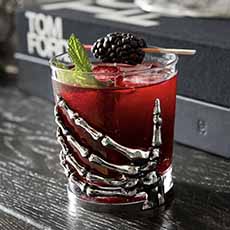|
There’s something different in maple syrup, and so special that it keeps selling out.
It’s Runamok Maple’s Sparkling Syrup, flush with edible gold (photo #1).
Runamok is an artisan producer of specialty maple syrup; not only classic varieties, but exciting flavored ones.
Not just for breakfast, these syrups are special garnishes or mixed ins for cocktails, desserts, marinades, sauces and more.
While today’s focus is on the sparkly syrup, there are many other options that make great gifting.
They’ll also open your eyes to what great maple syrup tastes like. It’s not your mother’s supermarket brand.
There’s more about the line .
RUNAMOK SPARKLE SYRUP: SOLD OUT
The first batch of Sparkle Syrup sold out in minutes. The company is planning another “sparkle harvest” in mid October.
“Pre-order today to secure your bottles of joy!” says Runamok.
Why Sparkle Syrup?
“Sparkle Syrup was created with one sole purpose: to make you smile,” Runamok notes.
“Life has been very, very serious lately; it is safe to say that 2020 has left no one unscathed.
“And while we can’t fix the big stuff, we can offer this little bit of whimsy to help make everyone smile.”
THE FIRST SPARKLING MAPLE SYRUP
The shimmer comes from food-safe pearlescent mica, the kind that’s used to add glitter to chocolates, cookies and desserts.
It’s completely edible and adds no additional flavor to the syrup. It’s purely an aesthetic innovation.
Just like a snow globe, the sparkles do settle after time. You just need to turn the bottle upside down and shake before pouring.
This syrup innovation tastes like Runamok’s traditional (rich and excellent!) maple syrups, but it’s full of sparkly gold glitter, sure to delight.
The glitter doesn’t alter the flavor or the texture, just the eye appeal and food fun.
And yes, it keeps selling out so if you want some for yourself and for gifts:
Put yourself on the waitlist today!
You may not be able to buy happiness, but you can buy an 8.45 fluid ounce bottle of Sparkly Syrup for $16.95, and feel happy every time you use it..
MORE RUNAMOK MAPLE SYRUPS
Beyond Sparkle, Runamok makes other Limited Edition syrups, infused with flavors: Cocoa Bean Infused, Holiday Spice Infused, Strawberry Rose Infused, even a forthcoming new Festivus Infused for the holidays (in honor of the Costanza family?)
That’s in addition to year-round bottles of Cardamom Infused, Cinnamon + Vanilla Infused, Coffee Infused, Elderberry Infused, Ginger Infused, Hibiscus Infused, Jasmine Tea Infused, Makrut Lime Infused and Smoked Chili Pepper Infused.
Exhausted yet? Don’t be. These syrups are worth your attention. On the website, you’ll see how each of them can be paired to add glorious flavors to food and drink.
How to choose? Staff favorites include Coffee Infused Maple Syrup, Makrut Lime-leaf Infused Maple Syrup, Smoked Chili Pepper Infused Maple Syrup and the non-infused Whiskey Barrel-Aged Maple Syrup.
Don’t want flavored syrup?
Try the non-infused classics: Bourbon Barrel Aged, Rum Barrel-Aged Maple Syrup, Smoked With Pecan Wood, the aforementioned Whiskey Barrel-Aged Maple Syrup and their signature maple syrup, Sugarmaker’s Cut.
WAYS TO USE MAPLE SYRUP
A good maple syrup deserves much more play than the conventional French toast, pancakes and waffles. Try it with;:
Baked Apples & Compotes
Hot Beverages: coffee, tea
Breakfast: on grapefruit or hot cereal, mixed into yogurt, brushed on cooking bacon
Butter: compound butter for cooking, maple butter spread
Cocktails: instead of sugar or simple syrup, or in Bourbon Maple Sour, a Mapletini or toddy
Cold Beverages: cocktails, club soda (to make maple soda), iced tea, lemonade, anything with blueberries
Condiments: mix in syrup for a sandwich spread, add to chutney, salsa
Confections: blondies, candied nuts, cookies, fudge, pumpkin maple cheesecake
Dessert Sauce: baked apple and any apple dessert, fruit salad, grilled fruit, ice cream, rice pudding
Dipping Sauce
Fruit Salad
Glazes: chicken, ham, pork, salmon, turkey
Marinades
Sides: baked beans and other bean and grain dishes
Snacks: drizzled over popcorn (add chili flakes, too)
Soups: butternut squash, pumpkin
Vegetables: in baked and otherwise cooked sweet potatoes, glazed carrots, mixed into other vegetable dishes
Vinaigrette: a splash in regular, balsamic or Dijon vinaigrette
Need sweetness in whatever you’re eating?
Use maple syrup, America’s indigenous sweetener.
> MAPLE SYRUP HISTORY <
|
|

[1] Runamok Sparkle Syrup, right spoon, compared to regular maple syrup, left spoon (all photos © Runamok Maple).
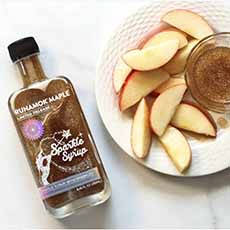
[2] Turn everyday apple slices into a fun snack.
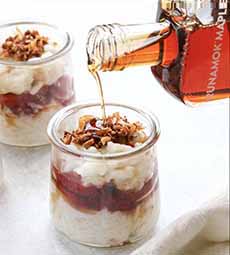
[3] Top your favorite dessert, from rice pudding to ice cream to un-iced loaf cakes: carrot cake, pound cake, zucchini bread…even angel food cake.

[4] Runamok’s Sparkle Syrup can sweeten and sparkle iced tea, but Runamok flavored syrups like Makrut Lime, above, can add an extra flash on the palate.

[5] Be sure to check out Runamok’s 16 syrups and limited editions. Here, Cocoa Bean Infused Maple Syrup.
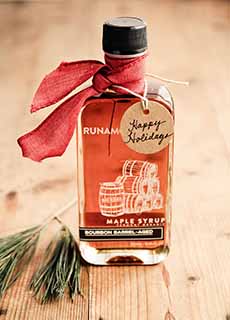
[6] A holiday gift for your favorite foodie.
|
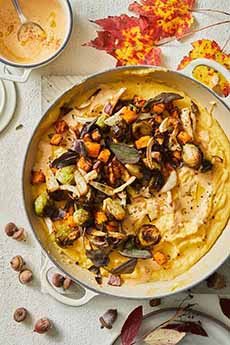
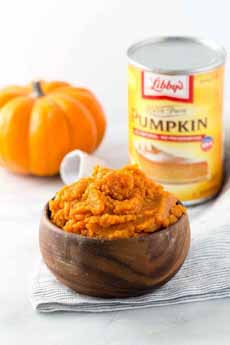
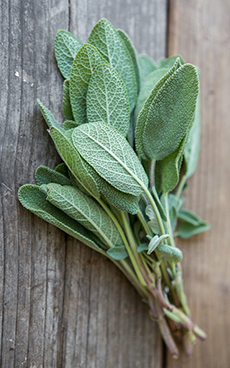
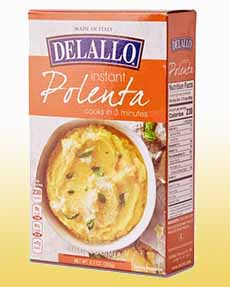
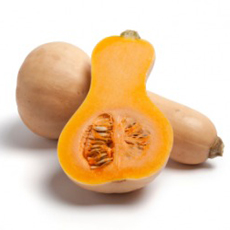
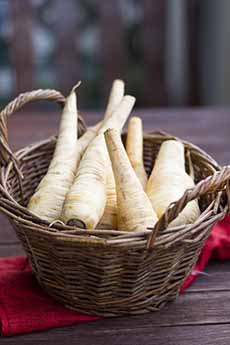
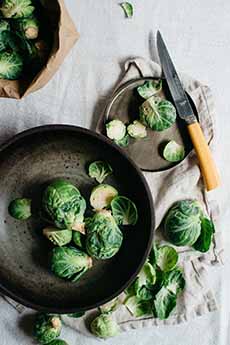
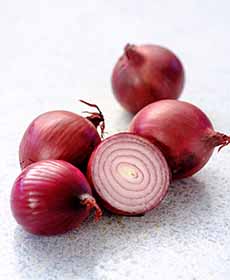
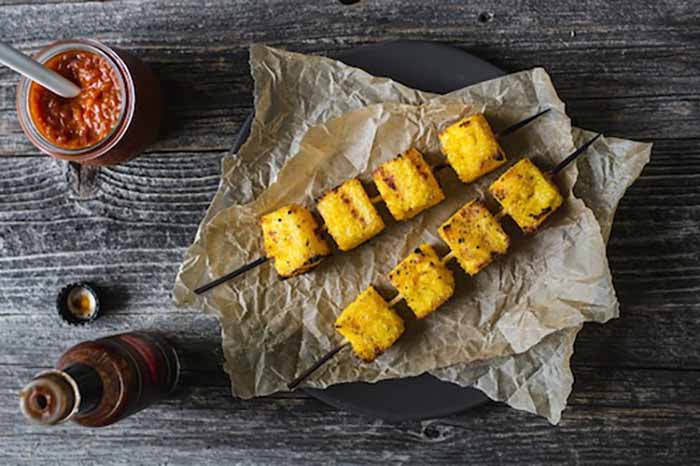
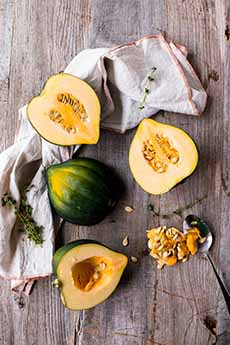
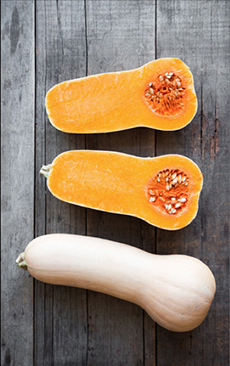
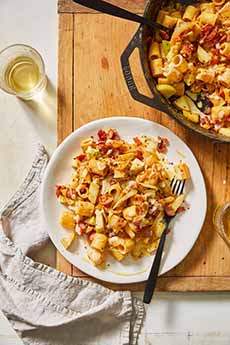


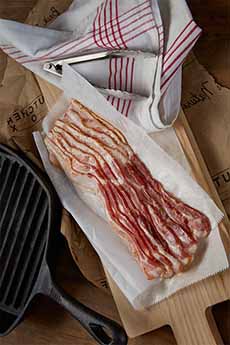
![[ ] .](https://blog.thenibble.com/wp-content/uploads/granny-smith-lisasolonynko-morguefile-230low.jpg)
